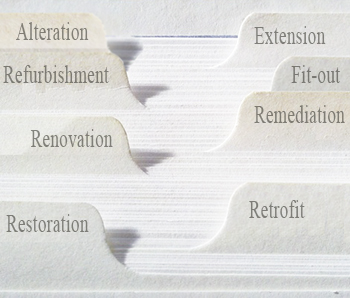Design economics
Contents[hide] |
[edit] Introduction
Design economics refers to design solutions that have been influenced by a range of principles that balance economic factors. The process of evaluating design economics may, for example, include incorporating the social and environmental consequences of the design undertaking as well as the consideration of the resources that are practical and available.
[edit] General considerations
During a presentation entitled, Design Economics, Dr Martin Tuli of Loughborough University states there are three aspects to the creation of parameters that incorporate design economics:
- Identifying how changes in parameters of a building will have an impact on its cost.
- Recognising that many elements influence the cost of a building.
- Prompting architects to design for the client in a manner that fulfils the values and requirements of the client.
When combined with cost planning, design economics is a core competency of design and specification. It covers the impact of design and other factors on costs throughout the entire building process - including cost plans that are required during the pre-contract stage.
Cost plans are generally prepared by cost consultants (often quantity surveyors). They evolve through the life of the project, and develop in detail and accuracy as more information becomes available about the nature of the design.
[edit] Design economics and cost planning
Design economics and cost planning is treated as one area of the optional Assessment of Professional Competencies (APC) for professionals who wish to pursue the building surveying APC.
APCs verify the qualifications and professionalism of candidates who wish to become chartered surveyors. These qualifications are necessary in order for professionals to become members of the Royal Institution of Chartered Surveyors (RICS).
[edit] Related articles on Designing Buildings Wiki
- Cost plans for construction projects.
- Design.
- Design life.
- How to become a quantity surveyor.
- Life cycle in the built environment.
- Quantity surveyor.
- Royal Institution of Chartered Surveyors.
- Utilising life cycle costing and life cycle assessment.
- Whole life costs.
[edit] External resources
- Dr Martin Tuli, Design Economics.
Featured articles and news
Retrofit 25 – What's Stopping Us?
Exhibition Opens at The Building Centre.
Types of work to existing buildings
A simple circular economy wiki breakdown with further links.
A threat to the creativity that makes London special.
How can digital twins boost profitability within construction?
The smart construction dashboard, as-built data and site changes forming an accurate digital twin.
Unlocking surplus public defence land and more to speed up the delivery of housing.
The Planning and Infrastructure Bill
An outline of the bill with a mix of reactions on potential impacts from IHBC, CIEEM, CIC, ACE and EIC.
Farnborough College Unveils its Half-house for Sustainable Construction Training.
Spring Statement 2025 with reactions from industry
Confirming previously announced funding, and welfare changes amid adjusted growth forecast.
Scottish Government responds to Grenfell report
As fund for unsafe cladding assessments is launched.
CLC and BSR process map for HRB approvals
One of the initial outputs of their weekly BSR meetings.
Architects Academy at an insulation manufacturing facility
Programme of technical engagement for aspiring designers.
Building Safety Levy technical consultation response
Details of the planned levy now due in 2026.
Great British Energy install solar on school and NHS sites
200 schools and 200 NHS sites to get solar systems, as first project of the newly formed government initiative.
600 million for 60,000 more skilled construction workers
Announced by Treasury ahead of the Spring Statement.
The restoration of the novelist’s birthplace in Eastwood.
Life Critical Fire Safety External Wall System LCFS EWS
Breaking down what is meant by this now often used term.
PAC report on the Remediation of Dangerous Cladding
Recommendations on workforce, transparency, support, insurance, funding, fraud and mismanagement.
New towns, expanded settlements and housing delivery
Modular inquiry asks if new towns and expanded settlements are an effective means of delivering housing.

























